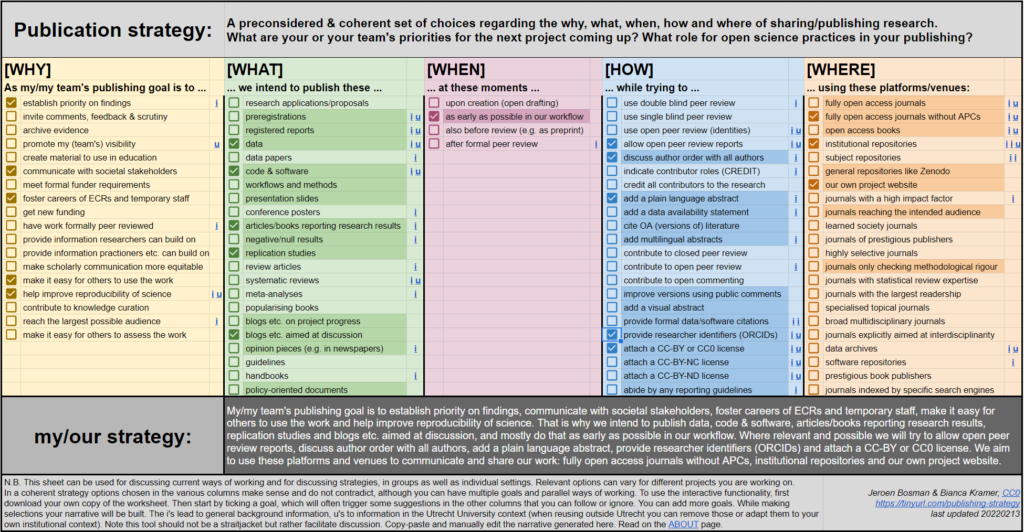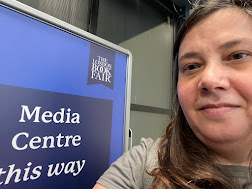Publication strategy and open science

Rethink your publishing strategy. Instead of making it all about numbers and prestige (High Impact factor and Journal, find answers to the questions of Why, What, When, and How to make your research results available and based on that decide Where to publish.
Bianca Kramer and Jeroen Boseman have developed a simple tool to make it easy for you to identify your own and your colleagues’ priorities and preferences when it comes to scholarly publishing and dissemination of your work.

This sheet can be used for discussing current ways of working and for rethinking and discussing strategies, in groups as well as individual settings. Relevant options can vary for different projects you are working on. In a coherent strategy options chosen in the various columns make sense and do not contradict, although you can have multiple goals and parallel ways of working. You can use the current sheet to try it out, but note it is open to everyone so actions from others may interfere with what you do.
To fully use the interactive functionality and be able to retain your own choices, first download your own copy of the entire worksheet.
Then start by ticking a goal, which will often trigger some highlighted suggestions in the other columns that you can follow or ignore. Note that suggestions given are options that are specifically relevant for reaching the selected goal and do not imply that other options are irrelevant. Also, the potential overlap among publication venue options is intentional: for instance, an open access journal can also be a journal with a high impact factor.
The i’s lead to general background information, the u’s to information in the Utrecht University context. You can tick additional goals. It is advised to first consider options for each goal you may have before starting to combine goals. While making selections your narrative will be built.
Note this tool should not be considered a straitjacket but rather facilitate discussion. Your can copy-paste and manually edit the narrative generated here. It is a simplification of reality and when combining goals the generated narrative does not specify which options chosen relate to which of your goals.
When adapting this tool for use outside Utrecht you can remove the u’s or adapt them to your own institutional context. Also, when adapting your own version of this worksheet, you can make the hidden sheet appear that is used for generating text for the narrative. Finally, please be aware that adding or sorting will likely affect the conditional cell formatting rules used for the suggestions.
tinyurl.com/publishing-strategy


